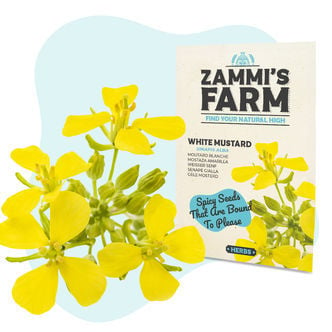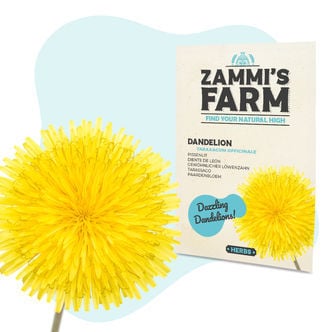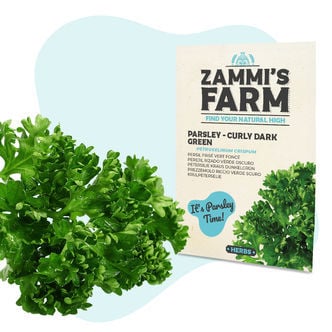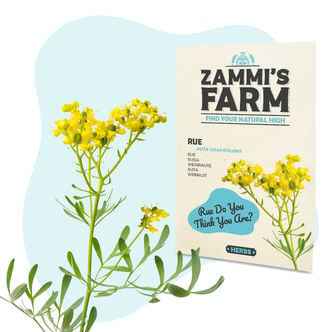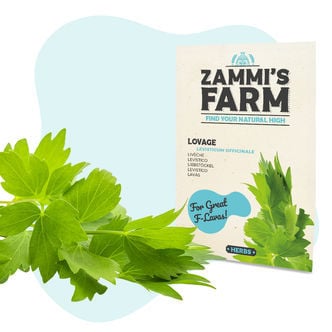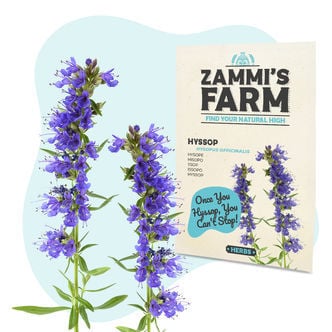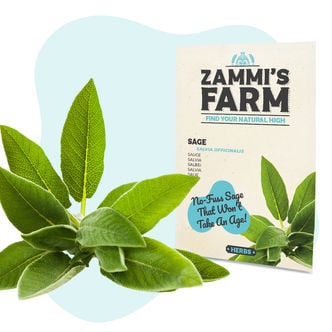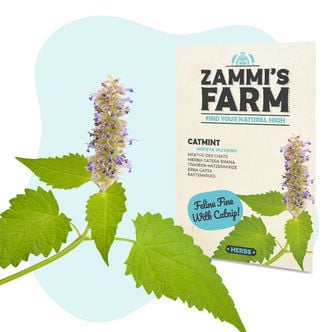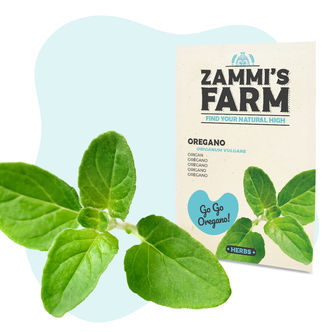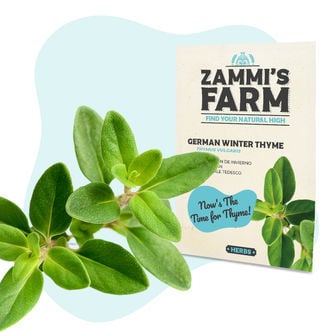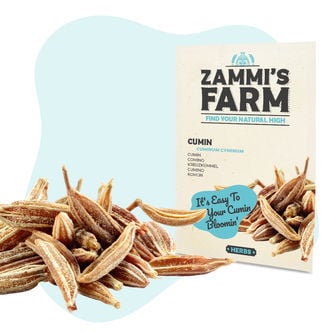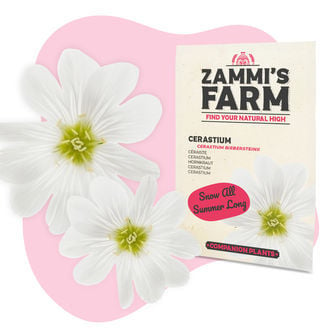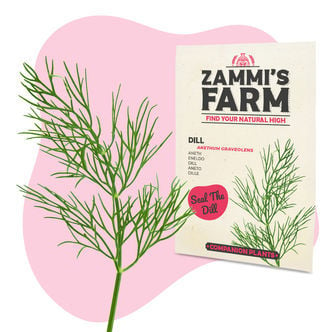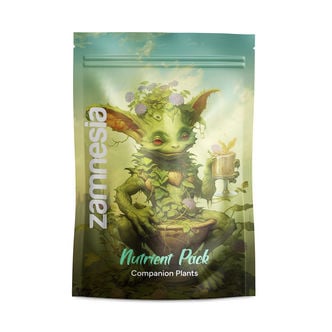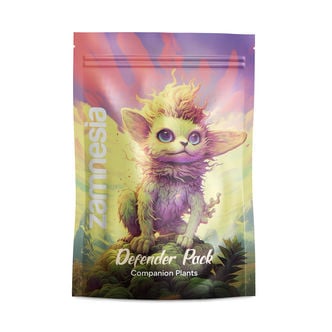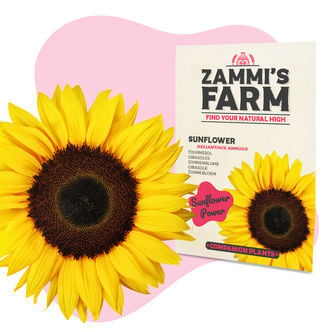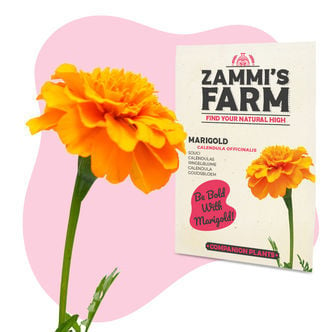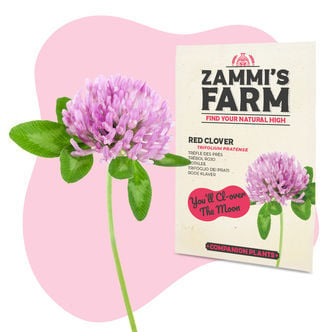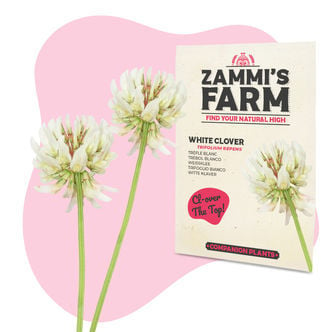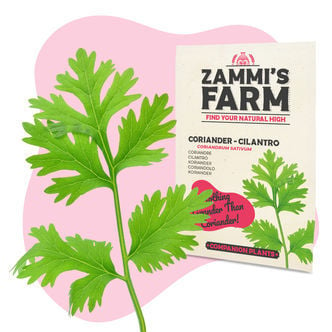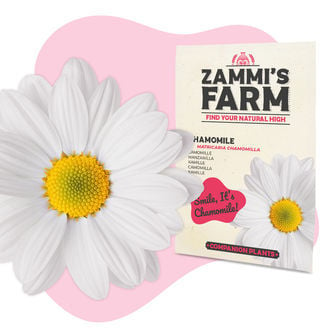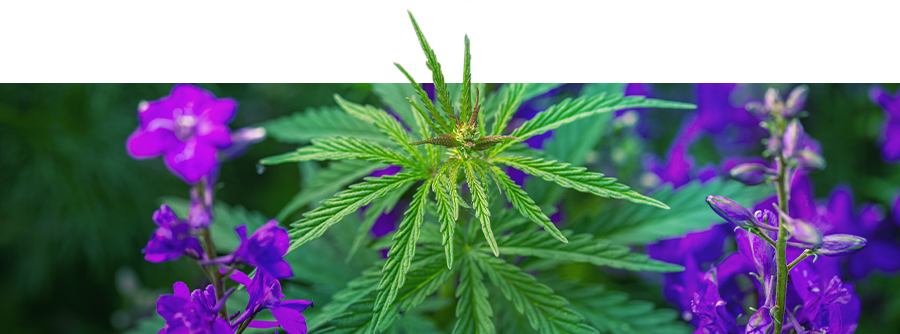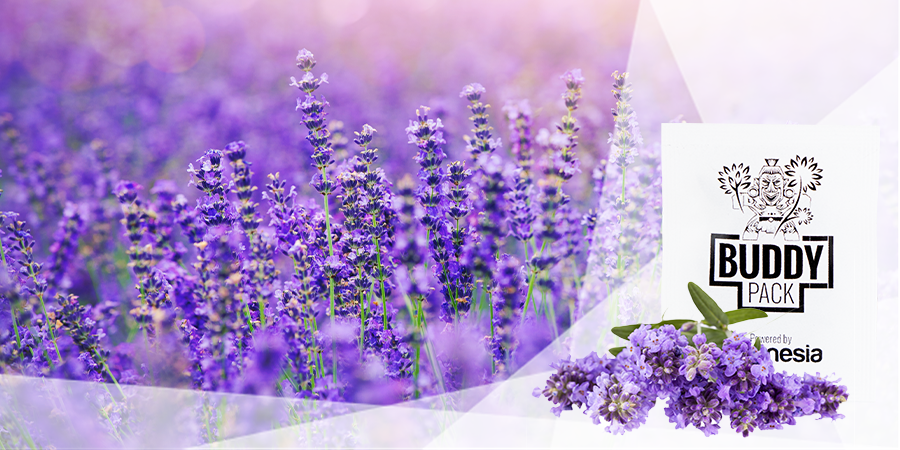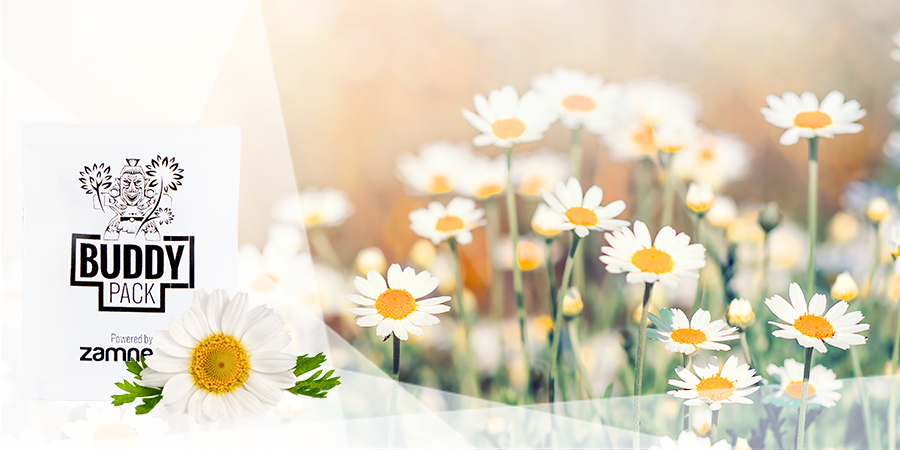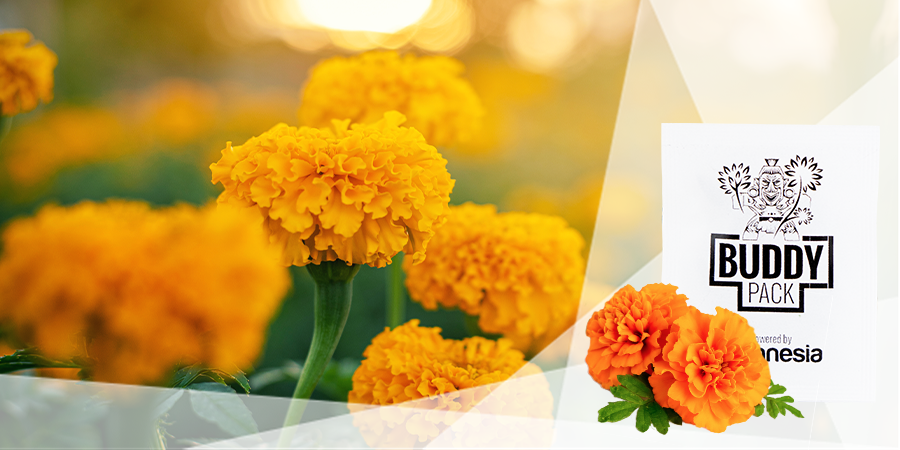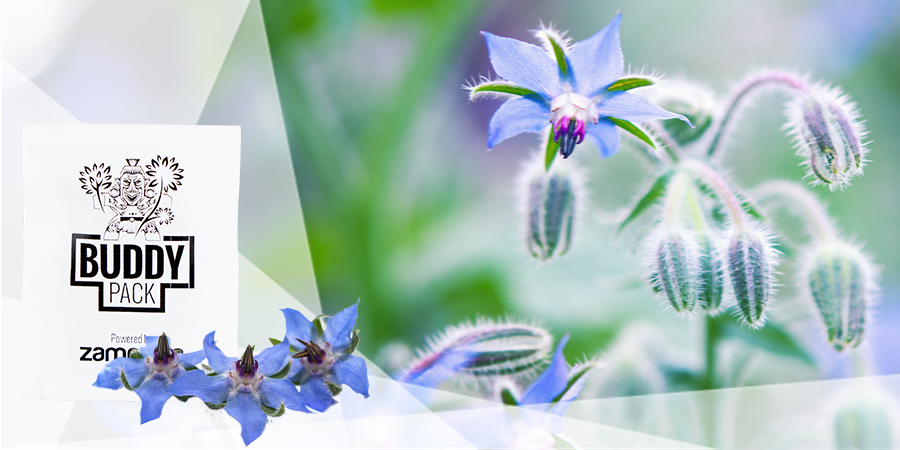Companion Plants
There are 34 products.Growing companion plants alongside with your cannabis plants can provide many benefits. How about getting the perfect stealth grow going by hiding your precious herbs from nosy neighbours or providing your plants with protection from wind and weather? Companion plants can also provide natural pest and bug control and they can help support your plant’s nutrition needs and good health. In our companion planting category you can find anything that you need to get the perfect companions for your cannabis grow no matter whether your grow indoors or outdoors!
Companion Plants - Click here for more infoGeotextile Fabric Wall Planter (10L)
These 10L geotextile Wall Planters from Gronest are made from 100% recycled material and are perfect for flowers and plants that love to hang. The fabric has many benefits and it allows for great aeration and run off, leading to healthy roots for your plants. Go vertical and create a garden right on your wall with Gronest's eco-friendly Wall Planters.
White Mustard (Sinapis alba) Seeds
White mustard (Sinapis alba) is versatile. Use the seeds in cooking, sauce making and pickling, and the young leaves in salads and other dishes. The choice is entirely up to you. If you're looking to grow, sow the seeds in March, and they'll be ready in the summer. Generally low maintenance, all it takes is just some moist soil and the standard light and warmth, and you'll be golden.
Dandelion (Taraxacum officinale) Seeds
Taraxacum officinale, aka the dandelion, is a herbaceous perennial plant that's perfect for all kinds of growing setups. Allow the beautiful yellow colour to brighten up your life. Sow in spring, and allow plants to flourish over the summer months. Provide well-draining soil and plenty of light and warmth, and you'll be rewarded with a plant boasting numerous culinary and herbal uses.
Parsley 'Curly Dark Green' (Petroselinum crispum) Seeds
Unlike most herbs, Petroselinum crispum (parsley) likes fertile soil. Parsley plants can be started indoors in a propagator or on a warm, sunny windowsill. Alternatively, sow directly outdoors after the last frost. Parsley plants like full sun, regular watering, and occasional, balanced fertilisation. Harvest fresh leaves and stems to promote bushier growth, and use in the kitchen as you please.
Rue (Ruta graveolens) Seeds
Ruta graveolens, or simply rue, is very hardy and can tolerate poor soil fertility and droughts. Plant established rue specimens in full sun and water sparingly, especially in dense soils. Use mulch to insulate rue plants during winter, and cut back plants entirely to their old wood in spring to encourage new growth. While previously used in various cuisines, rue is best grown as an ornamental.
Lovage (Levisticum officinale) Seeds
Lovage seeds are best germinated indoors during spring, then brought outside once they have developed 2 sets of leaves and the last frost has passed. Transplant seedlings into fertile, deep, well-draining soil in full sun. Where possible, keep the soil slightly acidic (roughly 6.5 pH) and partly sandy/loamy with plenty of organic matter. Cook lovage leaves/roots or eat them raw in salads.
Hyssop (Hyssopus officinalis) Seeds
Hyssop, or Hyssopus officinalis, is part of the mint family and traditionally found in southern Europe and the Middle East. This shrub is quick to grow and needs to be sown in moist soil under full sun in the early summer months of June onward. With harvests as early as August, the flowers and leaves of this plant have a range of culinary and holistic uses worth exploring.
Sage (Salvia officinalis) Seeds
Germinate sage in late fall/early spring in an indoor propagator. Bring seedlings outside after the last frost, once they've developed their first set of true leaves. Plant in pots or garden beds in a sunny spot with well-draining soil. Regularly cut back plants and harvest their fresh leaves (which have the best taste) to encourage new growth. Use sage in cooking or to make herbal teas.
Catmint (Nepeta mussinii) Seeds
Catmint/catnip is very hardy and can be sown directly outside in late spring. It likes slightly acidic, well-draining soil and full sun. Although it appreciates regular watering, established plants can deal with moderate dry spells. Besides being loved by cats, catmint attracts pollinators into the garden while repelling mosquitos and cockroaches. Catmint can also be brewed into a wholesome tea.
Oregano (Origanum vulgare) Seeds
Grow oregano in well-draining pots or planters in full sun. Oregano plants suffer in moist soil, so water them only when their soil has dried out, and plant them in a light soil mix. Shelter oregano plants during long wet spells, and harvest fresh leaves regularly to encourage new growth. Use liberally in Mediterranean and Latin American cuisine for an intense, earthy, and warm flavour.
German Winter Thyme (Thymus vulgaris) Seeds
A perennial plant originating from the Mediterranean, German winter thyme, also known as Thymus vulgaris, requires full sun to really flourish. This is a bushy plant that can become a mainstay in your garden for many years under the proper care. Planting in loamy, well-draining soil is the key to success here. Once ready, the herb is ideal for culinary use in a similar way to oregano and sage.
Cumin (Cuminum cyminum) Seeds
Cumin needs long, hot seasons to produce seeds to propagate and use in cooking. Start your seedlings off early (4 weeks before the last frost), and bring them outside once temperatures sit above 15°C. Grow your plants in full sun and water sparingly. They'll begin flowering in mid-summer and be harvest-ready after roughly 120 days. Use dried cumin seeds to season meats, stews, curries, and more.
Pot Marker (Zamnesia Exclusive) 5 pcs
Whether you're cultivating scorching hot peppers or some of your favourite Zamnesia strains, you're going to want to tell them apart. Cue our Exclusive Pot Markers in a premium black and gold design. These markers are available in a pack of five and are exclusive to our TRIBE members. Not only are you keeping your grow op organised, but it's clear that you're part of the coveted Zamnesia TRIBE.
Pot Markers (Zamnesia) 5 pcs
Cleanliness is next to godliness. When growing several plants of different strains, it is crucial to keep everything well-organized. These pot markers will help you with this task. Write all the required data on them ... date of sowing, strain, required EC-level and so on and you will never confound your precious babies again. Content: 5 pcs. Dimensions: 12 x 4,5cm.
Cerastium (Cerastium biebersteinii) Buddy Pack
Quite tough as an edge plant and eager to spread and be a complete ground cover, Cerastium is an ideal choice when planning your organic cannabis garden.
Dill (Anethum graveolens) Buddy Pack
Dill will keep spider mites away from your weed and make you a star in the kitchen. Easy to grow and a good companion to most plants.
Buddy Mix Pack NUTRIENT
The plants in this nutrient pack are great for improving the soil and surrounding environs of your cannabis plants. Some allow the plant to be supported by a root structure that increases drainage. Others literally act as natural, living mineral injectors, starting with nitrogen.
Buddy Mix Pack DEFENDER
These companion plants will work to defend your grow in several ways. They do keep some marauders away on their own. Even better? They also attract insects and bugs that defend your cannabis.
Sunflower (Helianthus annuus) Buddy Pack
A motif recognized worldwide, the sunflower is really thousands of smaller flowers all arranged in a pretty pattern designed to attract insects. It is ideal as a companion plant for cannabis.
Marigold (Calendula officinalis) Buddy Pack
Marigolds are a growth booster for surrounding plants and deter a host of bugs from your precious cannabis while displaying showy orange flowers.
Red Clover (Trifolium pratense) Buddy Pack
Red Clover is a well respected companion plant on the farm and in the backyard. Fixing atmospheric nitrogen for slow release later is its speciality while creating a carpet of living mulch.
White Clover (Trifolium repens) Buddy Pack
White Clover carpets accompanied by buzzing bees and flirting butterflies will help fix nitrogen in your soil. Cannabis and the other companion plants respond with vigorous green growth when White Clover is used as a companion plant.
Coriander (Coriandrum sativum) Buddy Pack
For thousands of years Coriander has been a medicine of renown and a favourite spice throughout recorded history. Coriander keeps pests at bay and enhances healthy growth of neighbouring species.
Chamomile (Matricaria chamomilla) Buddy Pack
Hardy and easy to grow or transplant the small and pretty Chamomile plant strengthens growth of neighbouring plants and is an ancient folk medicine.
Information About Companion Planting For Cannabis
Growing different plant species next to your cannabis can help keep them healthy, pest-free, and even increase their yields at the end of the growing season.
Humans have practised companion planting for thousands of years. The term simply refers to planting numerous species in close proximity. Take a walk in the forest. What do you see? A whole load of different plants hanging out in harmony, with almost no rigid structure in place.
You’ll also see the same growing pattern in permaculture settings. Known as a polyculture, raising different plant species close together offers protection from disease and enhances biodiversity while attracting beneficial bugs.
Vegetable gardeners will be familiar with companion planting. Some species perform extremely well together. For example, squash, beans, and corn form an ancient triad known as the “three sisters” thanks to their successful synergy. Nasturtiums work wonderfully alongside cucumbers, whereas basil brings in pollinators to help out your tomatoes.
But companion planting doesn’t mean throwing in a bunch of seeds and hoping for the best. Some species just don’t get along too well. Raising the wrong plants close together can result in disappointing yields and poor plant health. Artichokes don’t like being close to beans and peas, and beetroots would rather not hang out with runner and pole beans.
Growers also use companion planting with great success in cannabis gardens. The pungent aroma of growing cannabis plants attracts all manner of unwanted insect and human attention. Companion plants can help disguise this characteristic smell. Many species can also protect your cannabis plant, improve the soil, and act as allies in the constant battle against pests.
WHAT ARE COMPANION PLANTS FOR CANNABIS?
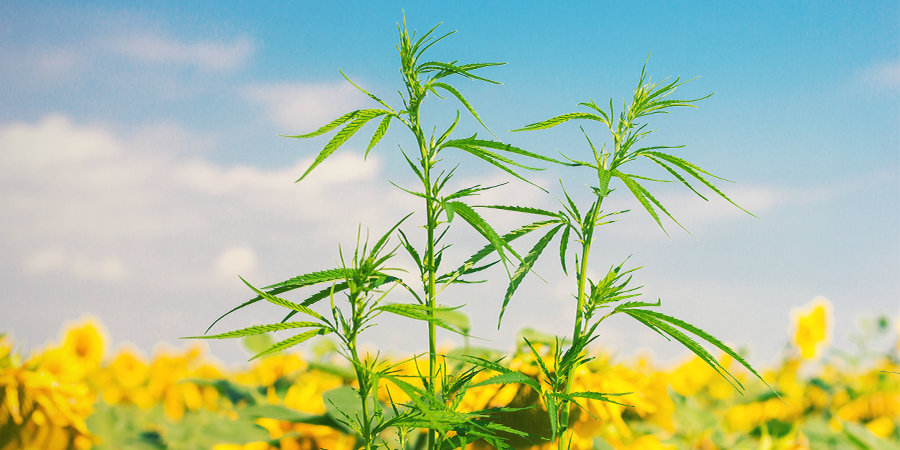
Various companion plants work particularly well as nearby plants to cannabis, promoting a healthy—even clandestine—growing environment. Nature usually has the answer to most of our issues, both in and out of the cannabis garden. A companion plant can replace harmful chemicals and digging practices that disturb soil life.
Companion planting offers a holistic and closed-loop strategy. At the end of the cannabis growing season, they either end up in your tea mug, on your dinner plate, or on the compost pile. We’d call that a win-win situation in any scenario!
WHY USE COMPANION PLANTS?
First and foremost, companion planting protects your cannabis plant. Growing outdoors has many advantages, but increased likelihood of pests and pathogens aren’t one of them. Aside from helping to prevent crop devastation, they also help to increase the beneficial life in your soil and garden as a whole. Discover the main reasons you should start companion planting during your cannabis grow below.
DETER HARMFUL INSECTS
Terpenes are one of the main reasons any grower cultivates cannabis. Aside from underpinning the gorgeous smell of the herb, they contribute to the unique psychoactive effects of each cultivar. However, we’re not the only species that appreciates the smell—even the taste—of cannabis.
Many minute critters enjoy chomping on cannabis leaves, stems, and roots. Some growers opt to spray down their garden with harmful chemicals, although most cultivators shudder at this approach.
Others craft natural concoctions to deter pest species. However, companion planting offers a less interventionist and more holistic approach. Sure, cannabis smells wonderful. Who can deny that? But other plants also emanate pungent aromas.
These species produce powerful aromatic molecules that work as natural insect repellants. They act as a sort of biological shield. Cool, right?
Of all the common cannabis pests, the main culprits include thrips, fungus gnats, whiteflies, aphids, leaf miners, and spider mites.
Some of the best companion plants to deter these pests include:
- Sweet Basil
- Coriander
- Lavender
- Chervil
- Marigold
The Zamnesia Scare Pack contains all of these protective species. Scatter these seeds around your garden beds and containers to deter pests that will otherwise snack on your plants.
ATTRACT BENEFICIAL INSECTS
Not all insects are bad. In fact, nearly all life on Earth depends on these lifeforms for their survival. Companion plants attract a host of beneficial insects to your garden that will actively hunt down pest species.
Protective plants found in the Defender Pack are especially helpful, adding another layer to your biological defences. See which plants attract these insect allies below.
- Dill: attracts parasitic wasps that hunt down a range of insect pests
- Yarrow: draws in lacewings that hunt aphids, mites, and whiteflies
- Chamomile: attracts ladybugs to the garden, which eat around 5,000 aphids in their lifetime
- Lavender: attracts hoverflies that control aphids
- Sunflower: attracts ladybugs and spiders
HIDE YOUR CANNABIS GROW
Insects are often low on the list of concerns when it comes to growing outdoors. Many cultivators raise their plants in areas where the law doesn’t tolerate such actions. Patrolling law enforcement and nosey neighbours will end your grow quicker than a whirling cloud of whiteflies.
Luckily, nature has the answer once again. Many companion plants serve up terpene profiles so pungent that they mask the scent of cannabis in the air. These species include:
- Lemon balm
- Lavender
- Peppermint
- Marigold
- Sunflower
You can find all of these species in our specially designed Stealth Pack. The size and beauty of some of these plants will also help draw attention away from your cannabis plants. Pairing small autoflowering strains with these species will keep your grow on the down-low.
PROVIDE NUTRIENTS AND IMPROVE SOIL STRUCTURE
Believe it or not, there’s more! Companion planting will also improve the health, structure, and biodiversity of your soil, which means healthy plants all around. Good soil structure promotes root aeration, prevents erosion, and increases drainage.
Other species introduce nitrogen into the soil. Most plants rely on fixed nitrogen present in the soil in the form of ammonia and nitrate. However, some plants fix nitrogen from the atmosphere and use it as a fertiliser themselves. Well, we can thank microbes (once again) for doing the hard work here.
Rhizobium bacteria team up with the roots of certain plant species. In return for sugars created through photosynthesis, the microbes fix nitrogen required by the plant. Plants then leave nitrogen in the soil, making it available to other plants. They can also be “chopped and dropped” to form a nitrogen-rich mulch layer.
Species that fix nitrogen and enhance soil structure include:
- Borage
- White clover
- Red clover
- Alfalfa
- Cerastium
All of these species come in the Zamnesia Nutrient Pack.
ALTERNATIVE USES OF A COMPANION PLANT
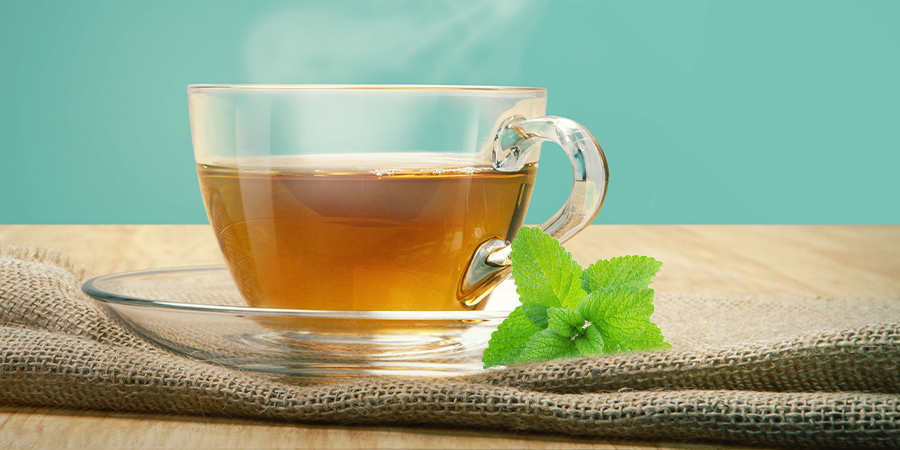
Companion planting offers benefits outside of the cannabis garden. Not only do these species help cannabis plants thrive, but some can be eaten and used in teas. This means no part of your garden goes to waste.
Companion plants such as coriander, dill, and basil add some serious taste to soups, salads, and pasta dishes. Species such as lavender, chamomile, and lemon balm make soothing teas.
HOW TO INCORPORATE COMPANION PLANTING IN YOUR CANNABIS GROW
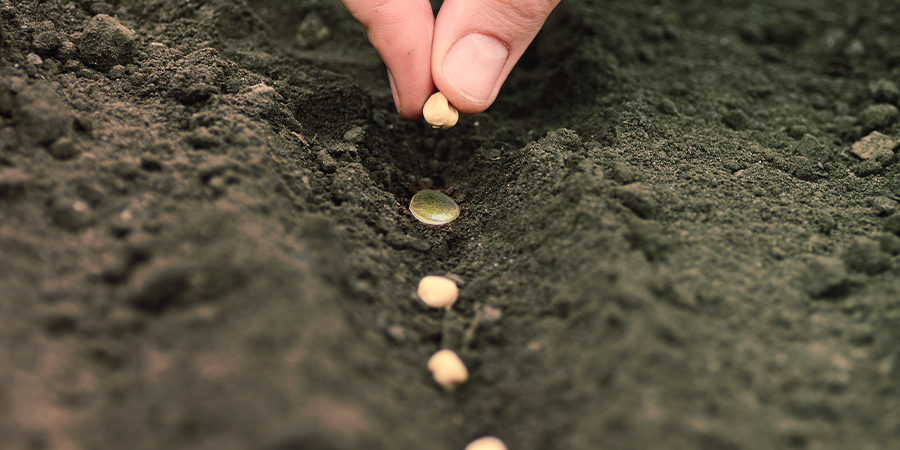
A companion plant doesn't require much work or attention. They are there to help improve the quality of your cannabis and shouldn’t take up too much of your time. You can sow most species directly into garden beds and containers. Sprinkle a light layer of soil on top of the seeds and water them in. Check growing calendars for your region to find out the best times to sow each species.
You can sow most seeds outdoors after the last frost has passed. Species such as lavender can be germinated in a greenhouse as early as February, meaning you’ll have good-sized plants ready to join forces with your cannabis as soon as you transplant outdoors.
Scatter seeds across beds. Don’t worry too much about structure or uniformity. It’s better to let them grow relatively wild to form a protective barrier around your plants. If things start to get overcrowded, simply thin your plants out as they grow.






 United States
United States


